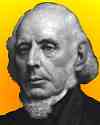
On 10 Dec 1795, Matthias Baldwin was born, an American manufacturer who developed steam-tight metal joints that enabled steam locomotives to operate at double the earlier steam pressure, giving better performance. His factory produced over 1,000 locomotives.
Reading the entry for Matthias Baldwin in The National Cyclopaedia of American Biography (1899) will enlighten you on how someone who started out someone that made jewelry became the foremost engine-builder in the United States. From there, it was a not surprising step to manufacturing locomotives at a time of growth of railroad traffic. The biography also tells what he did as a hobby, and how his wealth spurred him into philanthropy.
Once that article has aroused your interest, you can also read articles about M. W. Baldwin & Co.'s Locomotive Works and another called The Baldwin Locomotive Works.

On 10 Dec 1896, Alfred Nobel died, known for founding the Nobel Prizes bequeathing the fortune he amassed selling dynamite. Today's book pick is: Alfred Nobel: A Biography, by Kenne Fant, who explains how this inventor of smokeless explosives used in war came to regret his involvement with the resulting death and destruction, and the effect on him during his later life, when he withdrew in seclusion and melancholy.
It is available from Amazon, typically about New from $41.00. Used from $1.95. (As of earlier time of writing - subject to change.)
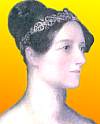 | The Analytical Engine weaves algebraical patterns just as the Jacquard loom weaves flowers and leaves. [Describing Charles Babbage's machine.] |
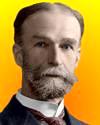 | Research cannot be forced very much. There is always danger of too much foliage and too little fruit. |
| Before you look at today's web page, see if you can answer some of these questions about the events that happened on this day. Some of the names are very familiar. Others will likely stump you. Tickle your curiosity with these questions, then check your answers on today's web page. | |
| Births | |
 | Walter Henry Zinn, born 10 Dec 1906, is a Canadian-American nuclear physicist who contributed to the U.S. atomic bomb project during World War II and to the development of the nuclear reactor. After the war Zinn started the design of an atomic reactor and, in 1951, he built the first breeder reactor. What is a breeder reactor? |
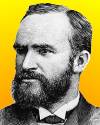 | An American librarian, born 10 Dec 1851 was an activist in the spelling reform and metric system movements. He is credited with the invention of the vertical office file. His best known invention was a system of library cataloging still widely used today that uses numbers from 000 to 999 to cover the general fields of knowledge and designating more specific subjects by the use of decimal points. Can you name this person? |
| Deaths | |
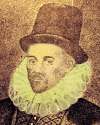 | An English pioneer researcher into magnetism (1544-1603) became the most distinguished man of science in England during the reign of Queen Elizabeth I. Can you name this scientist? |
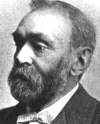 | Alfred Nobel (1833-1896) was the inventor of dynamite and other, more powerful explosives. An explosives expert like his father, in 1866 he invented a safe and manageable form of nitroglycerin he called dynamite, and later, smokeless gunpowder and (1875) gelignite. He helped to create an industrial empire manufacturing many of his other inventions. What was Nobel's nationality? |
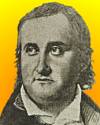 | Thomas Johann Seebeck (1770-1831) was a German physicist who discovered (1821) that an electric current flows between joined different conductive materials under certain conditions, known as the Seebeck effect. What conditions cause the Seebeck effect? |
| Events | |
 | On 10 Dec of a certain year, the National Science Foundation reported the discovery of the first planet outside our solar system, orbiting a star 21 million light years from Earth. In what decade was this discovery reported? |
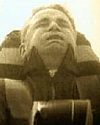 | On 10 Dec 1954, Lt. Col. John Paul Stapp, a flight surgeon, rode a rocket sled to 632 mph in a rocket powered sled at Holloman Air Force Base, New Mexico. He reached the speed of 632 mph in five seconds. At the end of the ride Stapp was stopped in 1.25 seconds which subjected him to 40 Gs. What was the intended application of this experiment? |
Fast answers for the previous newsletter for December 9: COBOL • fish fillets • Mary Leakey • Sir Patrick Moore • computer mouse • decade containing the year 1884.
 If you enjoy this newsletter, the website, or wish to offer encouragement or ideas, please send feedback by using your mail reader Reply button.
If you enjoy this newsletter, the website, or wish to offer encouragement or ideas, please send feedback by using your mail reader Reply button. Your click on a Facebook, StumbleUpon, or other social button on the site webpages is also a welcome sign of appreciation. Thank you for using them.
© This newsletter is copyright 2019 by todayinsci.com. Please respect the Webmaster's wishes and do not put copies online of the Newsletter — or any Today in Science History webpage. (If you already have done so, please remove them. Thank you.) Offline use in education is encouraged such as a printout on a bulletin board, or projected for classroom viewing. Online, descriptive links to our pages are welcomed, as these will provide a reader with the most recent revisions, additions and/or corrections of a webpage. For any other copyright questions, please contact the Webmaster by using your mail reader Reply button.
--
If you do not want to receive any more newsletters, Unsubscribe
To update your preferences and to unsubscribe visit this link
Executive Real Estate Business Class
-
"It was like a man with wings. It wasn't like anything you'd see on TV or in a monster movie." ...
About the publisher
Search This Blog
Blog Archive
-
▼
2020
(1542)
-
▼
December
(121)
- On This Day for December 31 - Ottawa made capital ...
- Newsletter for Thursday 31 December.
- December 31: The Battle of Quebec, a Rainy Day in ...
- All That's Interesting's 10 Most Popular Stories O...
- On This Day for December 30 - Union of Soviet Soci...
- Newsletter for Wednesday 30 December.
- December 30: Creation of the USSR, the All India M...
- Know Better in 2021
- On This Day for December 29 - U.S. annexation of T...
- Newsletter for Tuesday 29 December.
- December 29: On This Day in History
- The Best of HISTORY This Week
- The 10 Best History Uncovered Articles Of 2020
- On This Day for December 28 - Westminster Abbey op...
- Newsletter for Monday 28 December.
- December 28: Galileo Observes Neptune, Harriet Tub...
- The death of Thomas Becket | The history of New Year
- On This Day for December 27 - Dutch transfer of In...
- Newsletter for Sunday 27 December.
- December 27: On This Day in History
- On This Day for December 26 - Indian Ocean tsunami...
- Newsletter for Saturday 26 December.
- December 26: 1st Spanish Settlement in the New Wor...
- The Anti-Santa Who Takes Naughty Kids To Hell, The...
- On This Day for December 25 - Christmas celebrated...
- Newsletter for Friday 25 December.
- December 25: Andrew Johnson's Christmas Pardon, Ce...
- On This Day for December 24 - Treaty of Ghent, Joh...
- Newsletter for Thursday 24 December.
- December 24: The Treaty of Ghent, Author Stephenie...
- Demystified Video: Why Is Christmas in December?
- On This Day for December 23 - Aleksander Kwaśniews...
- December 23: Van Gogh's Madness, the Partition of ...
- On This Day for December 22 - Alfred Dreyfus sente...
- Newsletter for Tuesday 22 December.
- December 22: An Impenetrable Fortress Falls, the 1...
- On This Day for December 21 - Radium discovered by...
- December 21: The Soviet Union Ends, Life in the Tr...
- A history of Christmas – from Oliver Cromwell to V...
- On This Day for December 20 - Macau made an admini...
- Newsletter for Sunday 20 December.
- December 20: US Buys Louisiana, the Viet Cong and ...
- On This Day for December 19 - Articles of impeachm...
- Newsletter for Saturday 19 December.
- December 19: On This Day in History
- The Soviet Executioner Who Killed 7,000 Poles One ...
- On This Day for December 18 - Slavery abolished in...
- Newsletter for Friday 18 December.
- December 18: The Yuan Dynasty Begins, Nuclear Powe...
- The perfect gifts for the curious kids in your lives!
- On This Day for December 17 - Flight of the Wright...
- Newsletter for Thursday 17 December.
- December 17: Tamerlane Sacks Delhi, the Wright Bro...
- Demystified: Do We Really Use Only 10 Percent of O...
- On This Day for December 16 - Boston Tea Party, Ja...
- Newsletter for Wednesday 16 December.
- December 16: A Boston Tea Party, the Battle of the...
- Haunting Kennedy Assassination Photos That Most Pe...
- On This Day for December 15 - Premiere of Gone wit...
- Newsletter for Tuesday 15 December.
- December 15: Vandals, Mongols and the US Bill of R...
- On This Day for December 14 - Roald Amundsen's arr...
- Newsletter for Monday 14 December.
- December 14: Amundsen and Scott's Epic Race to the...
- On This Day for December 13 - New Zealand sighted,...
- Newsletter for Sunday 13 December.
- On This Day for December 12 - U.S. Supreme Court d...
- December 12: A Generous Manhattan Gift, Bush v. Go...
- How eels powered the medieval economy | The histor...
- 55 Of History's Creepiest Pictures And Their Distu...
- On This Day for December 11 - Abdication of King E...
- Newsletter for Friday 11 December.
- December 11: The Mayflower Pilgrims, an Abdication...
- UPDATED: Britannica Year in Review: Story of the Year
- Britannica Year in Review: Story of the Year
- On This Day for December 10 - Encyclopædia Britann...
- Newsletter for Thursday 10 December.
- December 10: Spanish-American War, Edward VIII and...
- Laurence Fishburne Hosts a New HISTORY Digital Series
- Demystified: What's the Difference Between Whiskey...
- On This Day for December 9 - Lech Wałęsa elected p...
- Newsletter for Wednesday 9 December.
- December 9: Belisarius Enters Rome, Lech Wałęsa El...
- What will you discover this Thursday?
- On This Day for December 8 - John Lennon fatally s...
- Newsletter for Tuesday 8 December.
- December 8: Lincoln's Amnesty Proclamation, the US...
- On This Day for December 7 - Pearl Harbor attack, ...
- Newsletter for Monday 7 December.
- December 7: Birth of Plastics, Infamy in Pearl Har...
- History books of the year | Historical board games...
- On This Day for December 6 - Irish Free State esta...
- Newsletter for Sunday 6 December.
- December 6: Mongols Destroy Kiev, Slavery Abolishe...
- On This Day for December 5 - Witchcraft condemned ...
- Newsletter for Saturday 5 December.
- December 5: Gold Rush in California, End of Prohib...
- HNN Newsletter: You are now unsubscribed
- 10 Medieval Execution Methods That Are The Definit...
- On This Day for December 4 - Ivan the Terrible pro...
-
▼
December
(121)
-
Blogroll
-
About
HistoryFact










0 comments:
Post a Comment